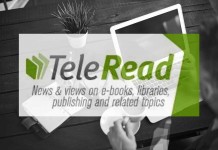In the fallout of the Sony Reader release, considerable single-purpose/general-purpose discussion has occurred (I’ve generated my share). Some people clearly prefer devices intended just for reading.
Here’s a typical comment (from a Reuters newsblog):
[A] single-purpose device usually does what it’s designed for better than multi-purpose devices can at the same job. Just like it’s easier to eat your steaks with a steak knife than a Swiss Army knife.
But is a single-purpose e-reader like Sony’s really better at reading books?
You can’t use it to read children’s books with color images. You can’t look at photographic books. You can’t read books that include Flash animations (as you can, say, on the Nokia 770). Without WiFi or Bluetooth or somesuch, you can’t link to sources or references on the web, which would seem to be a critical aspect of any book written for and in the electronic age. (Or of any reference text, or technical or scientific journal, etc.)
The “single purpose” that the Sony Reader is designed for is to read black-and-white texts that might contain crude black-and-white images. Yet virtually every K-12 textbook includes color images.
Don’t we want to include children in the e-text revolution? (OK, it’s slow enough that maybe “evolution” is a more appropriate term.) The price of color printing has fallen precipitously in the last 25 years, so that magazines and newspapers without color are the small minority, and a multitude of books are lavishly illustrated with color photos. And textbooks include color on every page, not just sporadic clumps here and there.
I think that a great single-purpose e-reader should be able to be used in schools without ravaging textbooks’ effectiveness. It shouldn’t strip us of the capacity to link to other information. And it shouldn’t treat illustrations and photographs as appendages to the text but as full-fledged equals in communication.
Hooray for the Sony Reader! Just don’t tell me its strength — or any of the other e-Ink e-readers coming — derives from being limited in so many ways.






























In a way, though, it does derive its strength from its limits.
The iPod became the most popular music player on earth not because it displayed ebooks, videos and pictures. Those came later. And it has not failed because it lacks wi-fi web browsing and bluetooth synchronization.
The Sony reader is a replacement for the paperback fiction novel. No need for color, animation, or sound there. It isn’t intended to replace text books.
The great strength of a dedicated e-reader, really, is the screen. People’s eyes do get tired reading books on LCD screens. E-paper, for all its limitations, is better. I can’t wait for some sort of (non-DRM) e-book reader to become available, even though I have a Palm and a laptop, both of which can display e-texts just fine, with animations, videos, pictures, Internet access, whatever. I don’t need any of that junk to read novels. I just need a big screen that does not hurt my eyes and has a battery life of more than 3 hours.
I can see why you’d prefer a Sony Reader to a Palm or a laptop. So would I. Whatever the pluses those devices have, they’re pretty minor compared to the negatives.
And if I’m stuck reading mostly 19th century (OK, pre-1923) public domain stuff, which is mostly text, then an e-Ink e-reader will fit the bill just fine. That’s subset of books, but a large subset.
Of course, it’s a smaller subset of all text you will read, if you count magazines, newspapers, websites and email. And just talking “reading” here, not any of the other things a device with a CPU is capable of.
Um, I’d say 99 percent of all the websites I visit have color and 80 percent have images, 100 percent of the magazines and newspapers have both (paper and online), and probably 20 percent of the email I get has color or images (including family photos being shipped around, plus the html mail from non-individuals).
So e-Ink is great for that big block of stuff. But you can’t get any of that other stuff, while other devices will come out that can. And you’ll think, wow, that screen is good enough for me.
I grew up in a generation that loved reading, straight text. But my children are growing up far more visual than I, and 80 percent (my 9-year-old) and 100 percent (6-year-old) of the material they read is graphical, with illustrations exceeding text (thanks to the manga my son devours). Face it, the kids today won’t settle for the limited capabilities we’re being sold today.
Btw, the battery life of the Nokia 770, my favorite of this generation (I –er, my company — was an early purchaser of the RocketeBook, but I’ve outgrown that favorite, and I’the same will surely be true of the 770) is a quite respectable 6 hours with WiFi and Bluetooth turned off.
Richard wrote: “The Sony Reader … isn’t intended to replace textbooks.”
Neither is my Nokia 770. But it will display them.
I guess we’re both saying that the Sony Reader is just filling one niche within a niche market. You’re saying it one way (“Who cares about the rest?”) and I’m saying it another (“Limited, limited, limited!”).
I’m not saying “who cares about the rest” as much as I am saying “judge the product on the objectives it was designed to solve, not what you want it to solve”. Those are two different things, really.
It’s kinda like saying that “I Was A Teenage Werewolf” is a rotten movie because it doesn’t explore the complexities of international diplomacy.
We’re also very early in the technology curve here; e-ink devices have yet to become commercially successful. How to make a color display out of the technology is, I’m sure, something that is being worked on but obviously isn’t here yet.